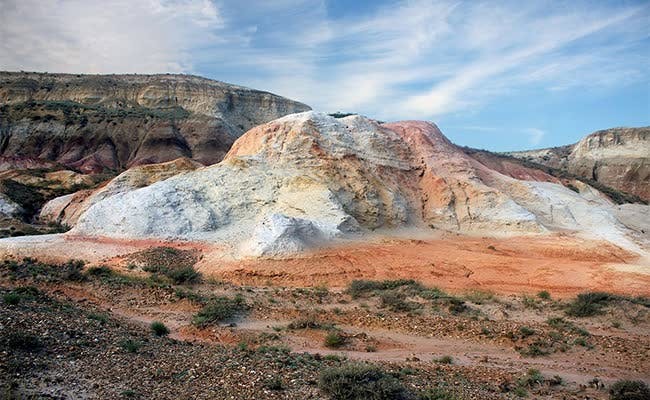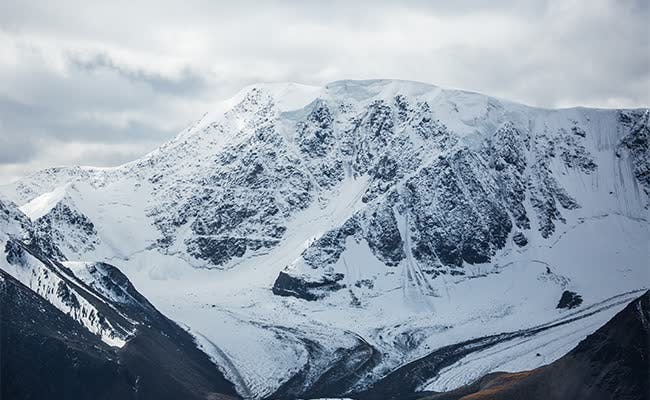Kiin Kirish Canyon - Flaming Rocks
The description you provided paints a vivid picture of the Kiin Kirish Canyon, also known as the Flaming Rocks, and its surrounding landscape in Kazakhstan.
Here are some key points from the description:
Kiin Kirish Canyon - Flaming Rocks:
Unique Geological Formation: Kiin Kirish is described as a natural aeolian town, renowned for its striking and colorful geological formations.
Colorful Clay Structures: The site features buildings with unique red, white, and orange structures made from tertiary clays. The buildings resemble towers, castle walls, and minaret domes, adding to the visual appeal of the site.
Flaming Rocks: The clay cliffs and abysses of Kiin Kirish resemble flames waving in the wind, earning them the nickname "Flaming Rocks."
Location and Landscape:
Distance from Kurchum: Kiin Kirish is located approximately 120 kilometers from the town of Kurchum, making it a roughly two-hour journey to reach this remarkable destination.
Road Conditions: The road leading to Kiin Kirish is described as partially paved but in bad condition. Travelers can expect a driving speed of 50-60 km/h on paved sections and 15 km on unpaved sections.
Landscape: The area surrounding Kiin Kirish includes barren valleys, meadows near dry stream channels, and desert plains. The unique geological formations stand in stark contrast to the arid landscape.
Flora and Fauna:
Unique Flora: The region features unique plant species, including two rare species of plants recommended for regional protection: Krylov's ferule (Ferula krylovii) and atraphaxis greyish (Atraphaxis canescens).
Rare Wildlife: Kiin Kirish is a place where rare species of animals concentrate. It is home to the yellow lemming (Lagurus luteus), a species of scientific interest on the brink of extinction. Predatory mammals and birds, some of which are also in the Red Book, rely on it as a food source.
Birdlife:
Nesting Birds: The clay cliffs of Kiin Kirish provide nesting grounds for various bird species, including the eagle-owl (Bubo bubo), Baloban (Falco cherrug), and steppe eagle (Aquila nipalensis), all listed in the Kazakhstan Red Book. Other birds, such as the golden eagle, steppe kestrel, and more, are also found in the area.
Diverse Landscapes:
Landscape Diversity: The nearby region of Northern Zaisan offers a range of landscapes, from loose rock and pebbles to clay and brackish deserts. The area's landscape diversity is one of its distinctive features.
Inaccessibility and Preservation:
Preservation of Primeval Landscapes: Kiin Kirish's inaccessibility has unintentionally preserved its landscapes in their original primeval condition, as there is minimal economic activity in the region.
Sunsets and Nightscapes:
Colorful Sunsets: Sunsets in the area are described as extremely beautiful, coloring the lake and surrounding desert landscape in hues of orange, yellow, and red.
Starry Nights: The night skies in the region are adorned with vast stars, warm winds, and the sounds of the desert, creating a captivating and memorable experience for travelers.
Kiin Kirish Canyon is a place of remarkable natural beauty, unique geological formations, and significant ecological value. It offers an enchanting and mystical atmosphere that leaves a lasting impression on visitors.
RELATED DESTINATIONS
The Semey Test Site, also known as the Semey Nuclear Test Site, is a historical and significant location in Kazakhstan where the Soviet Union conducted a large number of nuclear tests during the Cold War. Here are some key details about the Semipalatinsk Test Site:
The description you provided paints a vivid picture of the Kiin Kirish Canyon, also known as the "Flaming Rocks," and its surrounding landscape in Kazakhstan. Kiin Kirish is described as a natural aeolian town, renowned for its striking and colorful geological formations.
The Altai Mountains, which are a part of the greater Altai Mountain system, extend into the eastern part of Kazakhstan and are situated along the border between Kazakhstan, Russia, Mongolia, and China. The Altai Mountains on the Kazakhstan side offer stunning natural landscapes and are known for their diverse flora and fauna, as well as their cultural and historical significance.


